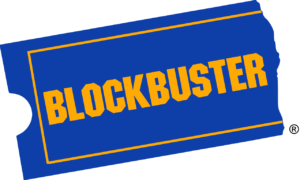What Happens When You Fail to Innovate?
Innovation is our mandate. We know that without innovation, our company and our industry can’t grow. Businesses…and big ones…fail because of leadership’s resistance to innovation.
What is Innovation?
To us, it is a new idea or product that leads to positive change. It makes an impact by solving a problem or filling a need. But innovation in business also helps your company stay competitive, relevant, adds value to your customers, and most importantly, increases revenue. The largest and most profitable companies in the world are where they are because of innovation. Apple. Amazon. Microsoft. All embody what it means to be innovative.
Innovation can be a new product or service, business model, work process, or a combo of all to encourage business growth. The ability and flexibility to changing market circumstances is truly the meaning of ‘adapt or die.’ And there are numerous examples of phenomenally successful companies that failed because they refused to adapt. Even though the following brands started out innovative, it was their failure to continue that spirit that led to their demise.
“That’s Cute—But Don’t Tell Anyone About It”
 The original Kodak camera came with a 100-exposure roll of film.
The original Kodak camera came with a 100-exposure roll of film.Hobby photographer, George Eastman, founded what was to become Kodak in 1889 with the intent “to make the camera as convenient as the pencil”—a revolutionary idea at the time. Some of Eastman’s core business principles were also innovative—continuous research for growth and development, reinvestment of profits, and treating employees fairly and with respect. According to Kodak, “Eastman felt that the prosperity of an organization was not necessarily due to inventions and patents, but more to workers' goodwill and loyalty, which in turn were enhanced by forms of profit sharing.” One of Eastman’s products, transparent roll film, helped Thomas Edison build the first motion picture camera.
It was Kodak that recorded Neil Armstrong’s walk on the moon. It was a Kodak product that allowed the Sojourner Rover to capture images of the surface of Mars. Kodak has a long history of developing not only innovative products but innovative business practices.
However…
In 1975, Steve Sasson, a Kodak engineer, invented the first digital camera. But why isn’t Kodak’s name synonymous with digital photography? Because leadership was too risk-averse on what the technology would do to sales of film. Sasson says, “…it was filmless photography, so management’s reaction was, ‘that’s cute-but don’t tell anyone about it.’” With Canon, Fuji, and Toshiba jumping on the digital bandwagon early, Kodak just couldn’t keep up. Kodak filed for bankruptcy in 2012. Though Kodak is still in business, it doesn’t lead the pack.
Let’s Make it a Blockbuster Night
 With a background in software, David Cook, the founder of Blockbuster Video, knew he could revolutionize the way retail video rental operated. Most video rental services were local mom-and-pop shops with limited titles held behind a counter. Cook developed a way to streamline the process and opened the first Blockbuster in Dallas, Texas in 1985 with the video directly on shelves for people to view and carry up to check out.
With a background in software, David Cook, the founder of Blockbuster Video, knew he could revolutionize the way retail video rental operated. Most video rental services were local mom-and-pop shops with limited titles held behind a counter. Cook developed a way to streamline the process and opened the first Blockbuster in Dallas, Texas in 1985 with the video directly on shelves for people to view and carry up to check out.
According to Reference for Business, “A magnetic strip on each video and sensors at the door discouraged theft. Computers were used to keep track of inventory, and a laser scanning system, which used barcodes on the tapes and on members' cards, simplified and reduced the time involved in conducting transactions.” Blockbuster Inc. - Company Profile, Information, Business Description, History, Background Information on Blockbuster Inc. (referenceforbusiness.com)
Just within two years, Blockbuster became the fifth-largest video retail chain in the country, and at the end of 1989, it opened its 1,000th store.
Blockbuster maintained its success until…
Inspired by Amazon, two men, Marc Randolph, and Reed Hastings, experimented with mailing a DVD to Hastings’ house in Santa Cruz, California. When the two discovered it arrived undamaged, Netflix.com was born. At first, they offered DVD rentals through a website but moved to a subscription service in 1999.
“We named our company Netflix in 1998 because we believed Internet-based movie rental represented the future, first as a means of improving service and selection, and then as a means of movie delivery.” – Reed Hastings
In the fall of 2000, Randolph and Hastings approached then CEO of Blockbuster, John Antioco, offering to sell Netflix to Blockbuster for $50 million. Antioco said, “The dot-com hysteria is completely overblown.” Hastings then proposed to partner with Antioco, trading advertising space. Again, Antioco thought Randolph and Hastings were a joke, declined again claiming Netflix was a “niche business.”
In How Netflix Became a $100 Billion Company in 20 Years, Product Habits Blog writes, “Rather than focus on improving delivery of physical DVDs, Netflix would reinvent entertainment delivery by providing its subscribers with instant access to thousands of titles that they could binge-watch on any device. While cable companies were preoccupied with traditional business models and quarterly revenue targets, Netflix was already looking a decade into the future and beyond.” How Netflix Became a $100 Billion Company in 20 Years | Product Habits
As of March 2022, Netflix had 221.6 million subscribers and is worth $176.07 billion. In 2010, Blockbuster went out of business.
From YAHOOOOO! To Whoops
 Do you remember when you Yahoo’ed instead of Googled? The once-most visited website in the world is officially closing.
Do you remember when you Yahoo’ed instead of Googled? The once-most visited website in the world is officially closing.
With the idea to publish a website directory, Jerry Yang and David Filo, two electrical engineering grad students at Stanford University published a website they called “Jerry and David’s Guide to the World Wide Web” in 1994. When it first launched, it was a just hierarchical list of websites maintained by humans, but they later used a search engine and launched it to the public in 1996. Within Yahoo!’s first two years, its market share price increased 600% with 95 million people visiting Yahoo.com a day.
Though Yahoo!’s decline was slow, business analysts say it was the lack of leadership’s vision and the company’s lack of innovation that led to its demise. Just two years after Yahoo! launched to the public, the company would make its first major mistake.
Just a couple of years after Yang and Filo, two other Stanford students, Larry Page, and Sergey Brin, developed a world wide web search algorithm they called “BackRub.” Using a web crawler that Page had created, the pair released their search engine on Stanford’s website in 1996.
Can you guess what this search engine turned into?
If you thought “Google,” you’d be correct.
In 1998, Page and Brin offered their technology to Yahoo! for the (low, low price of) $1 million. Yahoo! passed on purchasing their algorithm. In 2002, then Yahoo CEO Terry Semel backed out of acquiring Google again. And in 2006, Yahoo! pooh-poohed purchasing Facebook from Mark Zuckerberg for $1 billion saying that the social media platform wasn’t worth it.
Today, Facebook’s net worth is $528 billion by the way. And if you were wondering, Google’s is estimated to be $320 billion. Yahoo’s? Well…it’s worth nothing now.
So, What’s Next?
These examples are just three of many. General Motors, Xerox, Nokia, and even Sony make the list of companies that are household names that have suffered major setbacks, significantly lost market share, or tanked completely because the lack of leadership’s ability to be forward-thinking.
Elon Musk, one of the world’s most infamous disruptors says, “You’ve got to take big chances in order for the potential for big positive outcomes.” In 2017, a study found that two thirds of 500 C-Suite professionals predicted that 40% of Fortune 500 companies will fail by 2027 because they can’t keep up with the technologically disruptive companies like the Amazons, Ubers, and Teslas of the world.
You don’t have to be Jeff Bezos, Steve Jobs, or Sheryl Sandberg to be a disruptor, but you must embrace your forward-thinking employees, adapt to change and don't be scared to try new things. Innovation helps you stand out. It adds value to your products and services. It helps you be a leader. But most importantly, it can prevent you from failing.

-1.png?width=112&height=112&name=image%20(4)-1.png)















